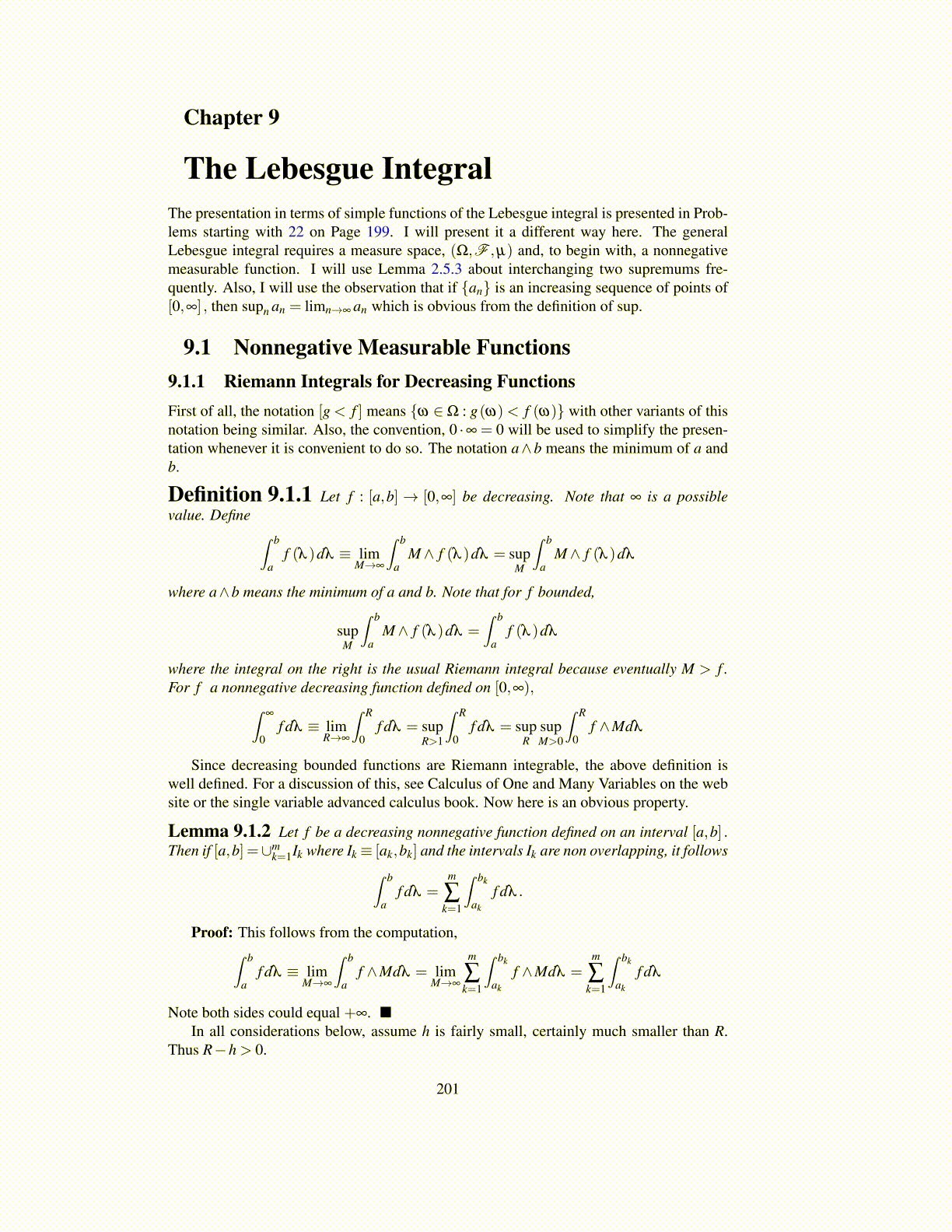
Chapter 9
The Lebesgue IntegralThe presentation in terms of simple functions of the Lebesgue integral is presented in Prob-lems starting with 22 on Page 199. I will present it a different way here. The generalLebesgue integral requires a measure space, (Ω,F ,µ) and, to begin with, a nonnegativemeasurable function. I will use Lemma 2.5.3 about interchanging two supremums fre-quently. Also, I will use the observation that if {an} is an increasing sequence of points of[0,∞] , then supn an = limn→∞ an which is obvious from the definition of sup.
9.1 Nonnegative Measurable Functions9.1.1 Riemann Integrals for Decreasing FunctionsFirst of all, the notation [g < f ] means {ω ∈Ω : g(ω)< f (ω)} with other variants of thisnotation being similar. Also, the convention, 0 ·∞ = 0 will be used to simplify the presen-tation whenever it is convenient to do so. The notation a∧b means the minimum of a andb.
Definition 9.1.1 Let f : [a,b]→ [0,∞] be decreasing. Note that ∞ is a possiblevalue. Define ∫ b
af (λ )dλ ≡ lim
M→∞
∫ b
aM∧ f (λ )dλ = sup
M
∫ b
aM∧ f (λ )dλ
where a∧b means the minimum of a and b. Note that for f bounded,
supM
∫ b
aM∧ f (λ )dλ =
∫ b
af (λ )dλ
where the integral on the right is the usual Riemann integral because eventually M > f .For f a nonnegative decreasing function defined on [0,∞),∫
∞
0f dλ ≡ lim
R→∞
∫ R
0f dλ = sup
R>1
∫ R
0f dλ = sup
RsupM>0
∫ R
0f ∧Mdλ
Since decreasing bounded functions are Riemann integrable, the above definition iswell defined. For a discussion of this, see Calculus of One and Many Variables on the website or the single variable advanced calculus book. Now here is an obvious property.
Lemma 9.1.2 Let f be a decreasing nonnegative function defined on an interval [a,b] .Then if [a,b] =∪m
k=1Ik where Ik ≡ [ak,bk] and the intervals Ik are non overlapping, it follows∫ b
af dλ =
m
∑k=1
∫ bk
ak
f dλ .
Proof: This follows from the computation,∫ b
af dλ ≡ lim
M→∞
∫ b
af ∧Mdλ = lim
M→∞
m
∑k=1
∫ bk
ak
f ∧Mdλ =m
∑k=1
∫ bk
ak
f dλ
Note both sides could equal +∞. ■In all considerations below, assume h is fairly small, certainly much smaller than R.
Thus R−h > 0.
201